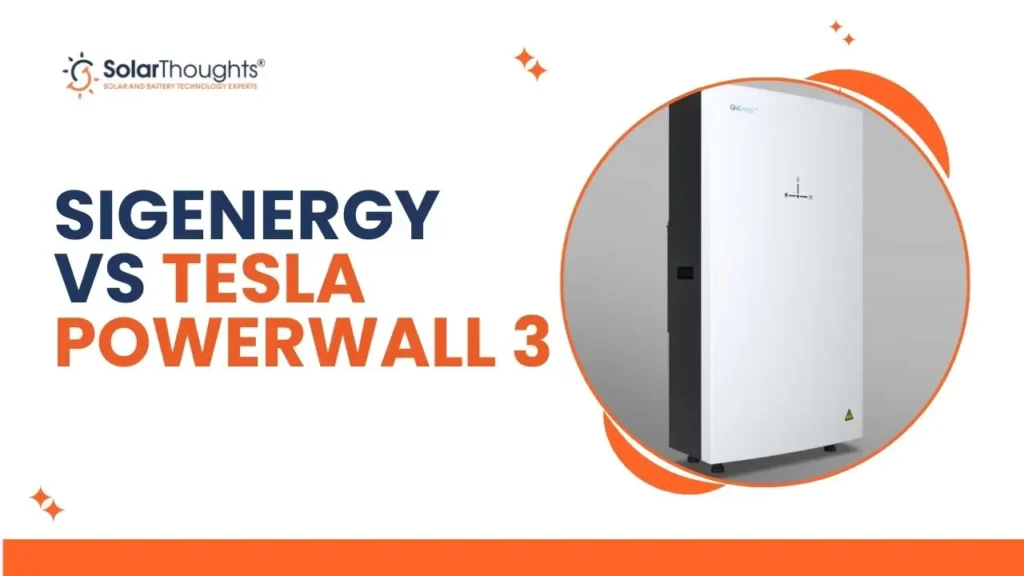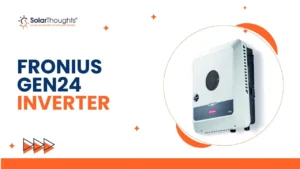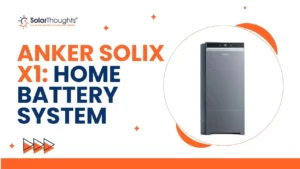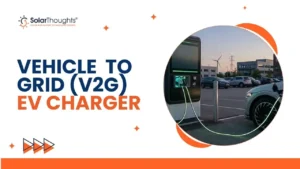Are you considering adding battery storage to your solar energy system? If so, you’ve likely encountered two leading contenders: the Sigenergy SigenStor and Tesla Powerwall 3. Both systems offer impressive capabilities, but which one is the right fit for your home’s energy needs?
Table of Contents
ToggleAt SolarThoughts, we’re committed to helping homeowners make informed decisions about their energy solutions. This comprehensive comparison will break down the key differences between Sigenergy SigenStor and Tesla Powerwall 3 to help you determine which system best aligns with your energy goals.
In this article, you’ll learn about:
- The fundamental differences between Sigenergy SigenStor and Tesla Powerwall 3
- How each system handles energy efficiency and conversion
- Backup power capabilities during outages
- Battery capacity and scalability options
- Cost considerations and long-term value
- Real-world performance and integration capabilities
- Which system suits different home types and energy needs
Understanding Home Battery Storage Basics
Before diving into the Sigenergy SigenStor vs Tesla Powerwall 3 comparison, let’s establish some fundamentals about home battery systems.
Home battery storage systems like the SigenStor and Powerwall 3 combine two essential components: battery modules for storing energy and an inverter for converting electricity between different forms. These systems allow you to:
- Store excess solar energy generated during the day
- Use stored energy during evening hours or peak rate periods
- Maintain power during grid outages
- Reduce reliance on utility companies
The inverter in these systems acts as a translator between your solar panels and your home. Solar panels generate direct current (DC) electricity, but your home runs on alternating current (AC). The inverter converts DC to AC, making solar energy usable for your appliances and devices.
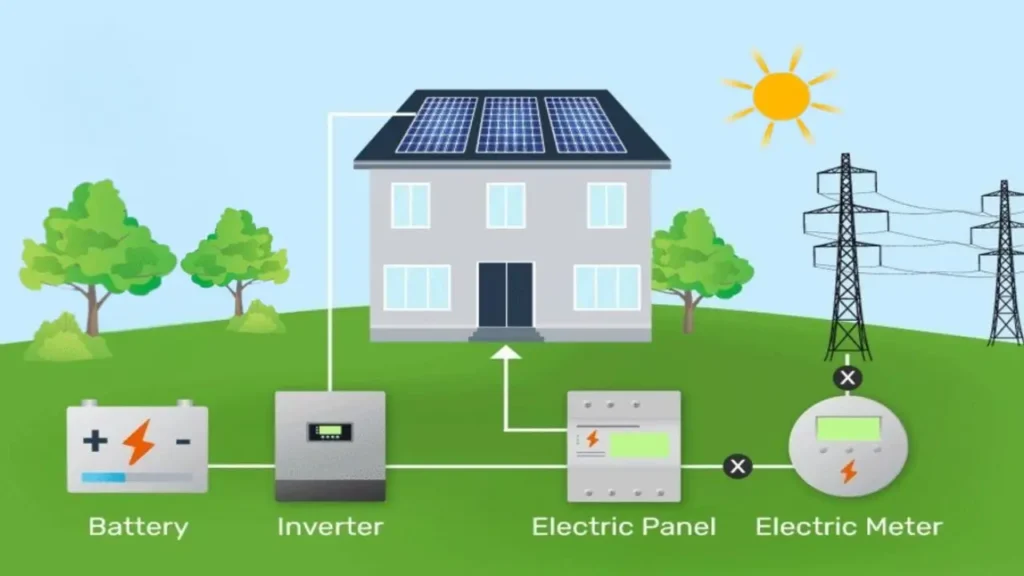
Both Sigenergy SigenStor and Tesla Powerwall 3 are hybrid systems, meaning they combine battery storage with inverter technology. However, they take different approaches to system design and functionality, which we’ll explore throughout this comparison.
Sigenergy SigenStor vs Tesla Powerwall 3: Core Specifications
Let’s examine the core specifications of each system to understand their fundamental differences.
Sigenergy SigenStor Specifications:
- Design: Modular system with stackable battery units
- Battery Capacity: Expandable in 8kWh increments up to 48kWh per stack
- Inverter: Integrated hybrid inverter with options for single-phase or three-phase
- Dimensions: Varies based on configuration (inverter plus battery modules)
- Warranty: 10-year manufacturer warranty
- Lifespan: Estimated 6,000+ cycles at 80% depth of discharge
- Installation: Wall-mounted or floor-standing options
Tesla Powerwall 3 Specifications:
- Design: All-in-one unit with fixed capacity
- Battery Capacity: Fixed 13.5kWh per unit
- Inverter: Built-in hybrid inverter
- Dimensions: 45.3″ x 30.1″ x 5.6″
- Warranty: 10-year manufacturer warranty
- Lifespan: Estimated 5,000+ cycles at 70% depth of discharge
- Installation: Wall-mounted installation
The most significant difference between Sigenergy SigenStor and Tesla Powerwall 3 is their approach to system design. SigenStor offers a modular, customizable system that can be expanded over time, while Powerwall 3 provides a sleek, all-in-one unit that offers simplicity but less flexibility.
Sigenergy SigenStor vs Tesla Powerwall 3: Battery Capacity and Scalability
When evaluating battery systems, capacity and scalability are crucial factors that determine how much energy you can store and whether the system can grow with your needs.
Sigenergy SigenStor Capacity and Scalability:
The SigenStor system takes a modular approach to energy storage:
- Starting capacity of 8kWh per module
- Expandable in 8kWh increments
- Up to 48kWh per stack (6 modules)
- Multiple stacks can be combined for larger installations
- Allows for gradual expansion as energy needs grow
Think of SigenStor like building blocks—you can start with what you need today and add more capacity later without replacing the entire system. This flexibility makes it suitable for homeowners who want to start small and scale up over time.
Tesla Powerwall 3 Capacity and Scalability:
Powerwall 3 takes a different approach with its fixed-capacity design:
- Each Powerwall 3 unit provides 13.5kWh of storage
- Multiple units can be installed together
- Currently supports up to 4 units (54kWh total)
- Tesla plans to introduce “dummy” units in 2025 to allow up to 16 units (216kWh)
While Powerwall 3 offers less granular scaling options, its standardized design simplifies the installation process and creates a cohesive aesthetic. However, you’re limited to expanding in larger 13.5kWh increments, which may not be ideal for all homeowners.
For homeowners who anticipate significant energy needs growth or want more precise control over their system size, Sigenergy SigenStor offers greater flexibility. However, if you prefer a streamlined, all-in-one solution and don’t anticipate needing custom sizing, Powerwall 3 provides an elegant solution.
Sigenergy SigenStor vs Tesla Powerwall 3: Energy Efficiency
Energy efficiency is a critical factor when comparing battery systems, as it directly impacts how much of your solar energy you can actually use.
Understanding Energy Conversion and Efficiency
Both Sigenergy SigenStor and Tesla Powerwall 3 can be installed as either DC-coupled or AC-coupled systems:
- DC-coupled: Solar panels send DC electricity directly to the battery before conversion to AC for home use
- AC-coupled: Solar panels send DC electricity to an inverter, which converts it to AC for home use, then back to DC for battery storage
DC-coupled systems are generally more efficient because they minimize conversion losses. Every time electricity changes form (DC to AC or vice versa), some energy is lost as heat.
Sigenergy SigenStor Efficiency:
- DC-coupled round-trip efficiency: Approximately 98%
- AC-coupled round-trip efficiency: Approximately 90%
- Direct-from-solar efficiency: 98%
Tesla Powerwall 3 Efficiency:
- DC-coupled round-trip efficiency: Approximately 97.5%
- AC-coupled round-trip efficiency: Approximately 90%
- Direct-from-solar efficiency: 97.5%
While both systems offer impressive efficiency ratings, Sigenergy SigenStor holds a slight edge in direct-from-solar efficiency. This small difference could translate to meaningful energy savings over the system’s lifetime, especially for larger installations.
The efficiency advantage of Sigenergy SigenStor may be particularly important for homeowners who generate a significant amount of solar energy and want to maximize their self-consumption.
Sigenergy SigenStor vs Tesla Powerwall 3: Backup Power Capabilities
One of the most compelling reasons to invest in a battery system is the ability to maintain power during grid outages. Let’s compare how Sigenergy SigenStor and Tesla Powerwall 3 handle backup power scenarios.
Sigenergy SigenStor Backup Capabilities:
- Available in single-phase or three-phase configurations
- Full three-phase backup capability
- Can power all circuits during an outage (given sufficient capacity)
- Supports generator integration for extended backup scenarios
- Seamless transition between grid and battery power
Sigenergy SigenStor’s full three-phase backup capability makes it particularly valuable for homes with three-phase power, ensuring that all electrical phases remain balanced during outages.
Tesla Powerwall 3 Backup Capabilities:
- Designed primarily for single-phase homes
- Can only back up one phase in three-phase installations
- Requires additional inverters for three-phase homes
- Phases remain unbalanced in three-phase setups
- No built-in generator integration
While Powerwall 3 provides reliable backup for single-phase homes, it faces limitations in three-phase installations. Homeowners with three-phase power may need to invest in additional equipment to achieve full backup capabilities with Powerwall 3.
If backup power is your primary concern, especially for a three-phase home, Sigenergy SigenStor offers more comprehensive protection. However, for single-phase homes with modest backup needs, either system can provide reliable power during outages.
Sigenergy SigenStor vs Tesla Powerwall 3: Smart Features and Monitoring
Modern battery systems offer more than just energy storage—they provide intelligent energy management and monitoring capabilities that help homeowners optimize their energy usage.
Sigenergy SigenStor Smart Features:
- Comprehensive energy management system
- Real-time monitoring via smartphone app
- Energy usage analysis and recommendations
- Time-of-use optimization
- Advanced scheduling capabilities
- Integration with smart home systems
- Remote firmware updates
Tesla Powerwall 3 Smart Features:
- Tesla App integration for monitoring and control
- Energy usage visualization
- Storm Watch weather monitoring
- Time-based control for rate optimization
- Grid services participation (where available)
- Over-the-air updates
- Seamless integration with Tesla vehicles and solar
Both systems offer sophisticated monitoring and management capabilities, but they differ in their ecosystem integration. Tesla Powerwall 3 provides particularly seamless integration with other Tesla products, while Sigenergy SigenStor offers broader compatibility with third-party systems.
The right choice depends on your existing smart home setup and whether you already use other Tesla products. If you’re already in the Tesla ecosystem, Powerwall 3 offers natural integration advantages. If not, Sigenergy SigenStor may provide more flexibility for integrating with diverse smart home systems.
Sigenergy SigenStor vs Tesla Powerwall 3: Cost Analysis
Cost is naturally a major consideration when investing in a battery system. Let’s break down the pricing for Sigenergy SigenStor vs Tesla Powerwall 3.
Sigenergy SigenStor Pricing:
- Starting at approximately $9,990 for an 8kWh system (including installation)
- Cost varies based on:
- Battery capacity (8kWh increments)
- Inverter capacity
- Single-phase vs. three-phase configuration
- Eligible for solar battery rebates (approximately $1,100 per 8kWh unit)
Tesla Powerwall 3 Pricing:
- Battery + Backup Gateway: Approximately $13,600
- Installed cost: Approximately $15,990 for retrofit installations
- Installed cost with new solar: Approximately $23,990
- Eligible for solar battery rebates (approximately $2,000 per unit)
Both systems qualify for available solar battery rebates, which can significantly reduce your upfront costs. However, it’s important to note that rebates are typically capped (often at 28kWh), which would limit you to two Powerwall units (27kWh) or three SigenStor units (24kWh).
The final cost comparison depends on your specific needs:
- For smaller installations, Sigenergy SigenStor can be more cost-effective, especially if you only need 8-16kWh of storage.
- For standard installations around 13-14kWh, the systems are competitively priced.
- For larger installations, the cost advantage will depend on specific configuration needs.
Remember that long-term value extends beyond the initial purchase price. Consider factors like efficiency, lifespan, warranty, and expandability when evaluating the total cost of ownership.
Sigenergy SigenStor vs Tesla Powerwall 3: Installation Considerations
The installation process and requirements differ between these two battery systems, which may influence your decision.
Sigenergy SigenStor Installation:
- Modular design allows for flexible installation options
- Can be wall-mounted or floor-standing
- Components can be installed separately to accommodate space constraints
- Works with existing solar systems through AC-coupling
- Supports off-grid installations
- Typically requires 1-2 days for installation
Tesla Powerwall 3 Installation:
- All-in-one design requires sufficient wall space
- Wall-mounted installation only
- Works best with new Tesla solar installations
- Can be retrofit to existing solar systems
- Not designed for off-grid applications
- Typically requires 1 day for installation
Installation complexity and requirements vary based on your specific home configuration and energy needs. A qualified solar installer can assess your home and provide recommendations tailored to your situation.
Sigenergy SigenStor vs Tesla Powerwall 3: Comparison Chart
Here’s a side-by-side comparison of the key features of Sigenergy SigenStor vs Tesla Powerwall 3:
| Feature | Sigenergy SigenStor | Tesla Powerwall 3 |
|---|---|---|
| Battery Capacity | Modular: 8kWh increments up to 48kWh per stack | Fixed: 13.5kWh per unit |
| Scalability | Highly scalable with 8kWh increments | Scalable in 13.5kWh increments |
| Inverter Type | Hybrid inverter with single-phase or three-phase options | Hybrid inverter (primarily single-phase) |
| Backup Power | Full three-phase backup | Single-phase backup (limited three-phase) |
| Efficiency (DC-coupled) | 98% | 97.5% |
| Off-grid Capability | Yes | No |
| Generator Integration | Yes | No |
| Design | Modular components | All-in-one unit |
| Installation | Wall-mounted or floor-standing | Wall-mounted only |
| Starting Price | $9,990 (8kWh) | $15,990 (13.5kWh) |
| Warranty | 10 years | 10 years |
Which System is Right for You? Sigenergy SigenStor vs Tesla Powerwall 3
Choosing between Sigenergy SigenStor and Tesla Powerwall 3 depends on your specific needs and priorities. Here’s a decision framework to help you determine which system is best for your situation:
Consider Sigenergy SigenStor if:
- You have a three-phase home and need full backup power
- You want to start with a smaller capacity and expand over time
- You require flexible installation options (wall or floor)
- You’re interested in off-grid capabilities
- You need to integrate with a generator
- You want maximum flexibility in system size
Consider Tesla Powerwall 3 if:
- You have a single-phase home
- You prefer an all-in-one, sleek design
- You already use Tesla products (solar, vehicles)
- You’re comfortable with the fixed 13.5kWh capacity increments
- You value the Tesla brand and ecosystem
- You have wall space for mounting
Home Type Considerations:
- Single-phase homes: Both systems work well, with Tesla Powerwall 3 offering a streamlined solution
- Three-phase homes: Sigenergy SigenStor provides more comprehensive backup power without additional equipment
- Large homes with high energy needs: Sigenergy SigenStor’s modular design may offer more flexibility
- Small to medium homes: Either system can work well, depending on energy needs
Energy Goals Considerations:
- Maximum self-consumption: Sigenergy SigenStor’s slightly higher efficiency may be advantageous
- Backup power focus: Consider your home’s electrical setup and backup needs
- Future expansion: Sigenergy SigenStor offers more granular scaling options
- Aesthetic priorities: Tesla Powerwall 3’s sleek design may be preferable
Conclusion
Both Sigenergy SigenStor and Tesla Powerwall 3 are excellent home battery systems that offer significant benefits for homeowners. Your choice ultimately depends on your specific home configuration, energy needs, and future plans.
Sigenergy SigenStor shines with its modular flexibility, three-phase support, and slightly higher efficiency. It’s particularly well-suited for homeowners who want a customizable system that can grow with their needs or who have three-phase homes requiring full backup capability.
Tesla Powerwall 3 excels with its sleek all-in-one design, brand reputation, and seamless integration with the Tesla ecosystem. It’s ideal for homeowners who prefer simplicity and have standard energy storage needs.
At SolarThoughts, we’re committed to helping you navigate these choices and find the perfect energy solution for your home. Our team of experts can provide personalized recommendations based on your specific situation and help you implement the system that best meets your needs.
Ready to take the next step in your solar journey? Contact SolarThoughts today for a free consultation and discover which battery system is right for your home.
Frequently Asked Questions About Sigenergy SigenStor vs Tesla Powerwall 3
Yes, both systems can be added to existing solar installations through AC-coupling. However, DC-coupling provides better efficiency and is recommended for new installations.
The backup duration depends on your energy consumption and the battery capacity. A typical 13.5kWh system can power essential appliances for 12-24 hours, while larger systems can provide longer backup times.
This depends on your energy needs. For most homes, a single Powerwall 3 (13.5kWh) or 16kWh of SigenStor capacity can cover essential loads. Larger homes or those with high energy demands may require additional capacity.
Sigenergy SigenStor is designed to support off-grid installations when paired with solar panels. Tesla Powerwall 3 is primarily designed for grid-tied applications and is not recommended for off-grid scenarios.
Yes, both systems qualify for the federal solar investment tax credit (ITC) and many state and local incentives. Rebates may be capped at specific capacity levels, so consult with a solar professional for details.
Yes, both Sigenergy SigenStor and Tesla Powerwall 3 offer mobile apps that allow you to monitor and control your system from anywhere with an internet connection.
Both systems have a 10-year manufacturer’s warranty. Under normal usage, they can be expected to retain at least 70-80% of their original capacity after 10 years.
Both systems contribute to reducing carbon emissions by storing renewable energy. The slightly higher efficiency of Sigenergy SigenStor may provide a small environmental advantage over the long term.
Read More On
What Are Heterojunction Technology (HJT) Solar Panels?
Why Solar Pre-Wiring During the Build Stage Is a Smart Move
Top 10 Solar Panel Installers in Gold Coast
GoodWe vs. Sungrow Solar Batteries: A Comprehensive Comparison
8 Reasons to Upgrade Your Current Solar System
People also search for
Tesla powerwall 3 vs sigenergy | sigenergy vs tesla powerwall 3 | sigenergy vs powerwall 3 | sigenergy battery vs tesla powerwall 3 | tesla powerwall vs sigenergy | powerwall 3 vs sigenergy

